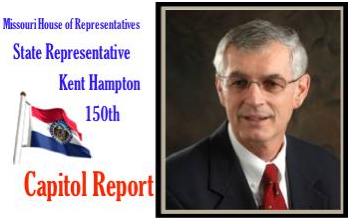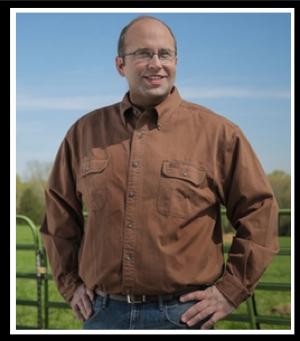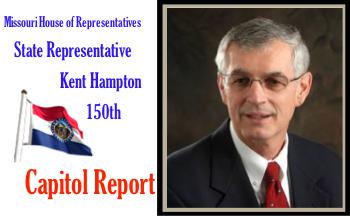
Submitted by
Dee Loflin, SMT Manager/Editor
The Mason Dixon Line
On this day in 1767, Charles Mason and Jeremiah Dixon complete their survey of the boundary between the colonies of Pennsylvania and Maryland as well as areas that would eventually become the states of Delaware and West Virginia. The Penn and Calvert families had hired Mason and Dixon, English surveyors, to settle their dispute over the boundary between their two proprietary colonies, Pennsylvania and Maryland.
In 1760, tired of border violence between the colonies' settlers, the British crown demanded that the parties involved hold to an agreement reached in 1732. As part of Maryland and Pennsylvania's adherence to this royal command, Mason and Dixon were asked to determine the exact whereabouts of the boundary between the two colonies. Though both colonies claimed the area between the 39th and 40th parallel, what is now referred to as the Mason-Dixon line, finally settled the boundary at a northern latitude of 39 degrees and 43 minutes. The line was marked using stones, with Pennsylvania's crest on one side and Maryland's on the other.
When Mason and Dixon began their endeavor in 1763, colonists were protesting the Proclamation of 1763, which was intended to prevent colonists from settling beyond the Appalachians and angering Native Americans. As the Britons concluded their survey in 1767, the colonies were engaged in a dispute with the Parliament over the Townshend Acts, which were designed to raise revenue for the empire by taxing common imports including tea.
Twenty years later, in late 1700s, the states south of the Mason-Dixon line would begin arguing for the perpetuation of slavery in the new United States while those north of line hoped to phase out the ownership of human chattel. This period, which historians consider the era of "The New Republic," drew to a close with the Missouri Compromise of 1820, which accepted the states south of the line as slave-holding and those north of the line as free. The compromise, along with those that followed it, eventually failed.
One hundred years after Mason and Dixon began their effort to chart the boundary, soldiers from opposite sides of the line let their blood stain the fields of Gettysburg, Pennsylvania, in the Southern states' final and fatal attempt to breach the Mason-Dixon line during the Civil War.
As you read this there are only 76 days left in this year, and 84 days until your Missouri House reconvenes at the start of 2014. In the hustle and bustle of life, we sometimes become so consumed in our own lives and schedules that we fail to take notice and care for others. Let me encourage you this week to speak to at least ten people you don’t know, hold the door open for five, and invite a minimum of two people to church. You never know the influence or encouragement you may play in someone’s life. Give thanks. See ya at church Sunday!
As always, it is an honor to serve you in the Missouri House. If you would like to discuss any issue, please call 573-751-3629. You can also email me at kent.hampton@house.mo.gov . I look forward to hearing from you.

Submitted by
Dee Loflin, SMT Manager/Editor
Cardinals Quest for a World Series Championship
On October 6, 1926, Yankee slugger Babe Ruth hits a record three homers against the St. Louis Cardinals in the fourth game of the World Series. The Yanks won the game 10-5, but despite Ruth’s unprecedented performance, they lost the championship in the seventh game. In 1928, in the fourth game of another Yanks-Cards World Series, Ruth tied his own record, knocking three more pitches out of the same park.
The 1926 championship promised to be an exciting one. The AL champs had a powerful lineup, later called the "Murderer’s Row," that included the great Babe, the young "Columbia Lou" Gehrig, and the leadoff man Earle Combs. For their part, the Cardinals had the intimidating Rogers Hornsby along with ace pitchers Flint Rhem and Bill Sherdel.
But the Yanks were heavily favored, and they won the first game easily. They lost the second, though, thanks to an outstanding full-game performance from St. Louis pitcher Grover Cleveland Alexander. The next day, Cardinal Jessie Haines pitched the whole game--and hit the only home run--in his team’s 4-0 Game 3 victory.
By the fourth game in the series, the underdog Cards were up two games to one. The Yanks needed to pull it together, and for one game, they did. Veteran Waite Hoyt pitched all nine innings while St. Louis shuffled through its entire bullpen. And the Babe--the Sultan of Swat, the Caliph of Clout, the Wali of Wallop--hit his three homers and led the Yanks to a 10-5 victory. Unfortunately for the Bombers, that game didn’t decide the series. Though they won the next game in 10 innings, they lost the next one by eight runs. And they were losing the seventh game by one run in the ninth inning when the Bambino stepped to the plate again. With a 3-2 count, Ruth drew his eleventh walk of the series and trotted off to first base. The Yanks’ hopes plummeted as quickly as they’d risen, though, when second baseman Hornsby nabbed him as he tried somewhat ploddingly to steal second. The game was over. Thanks to the magical Bambino, the Bombers had lost.
On October 18, 1977, Yankee Reggie Jackson became only the second player to hit three homers in a single Series game.
As the fresh air of October arrives and the regular season of baseball has ended, some are packing up and going home. But, our St. Louis Cardinals are preparing for the playoffs and hopefully the Fall Classic World Series. Aside from the updates on the weather, questions and recent developments about the Cardinals are a hot topic. With all the differing issues and opinions we may have formed, continue to focus on the freedoms we enjoy knowing the price that was shed for those, and without any doubt who is in charge. Give thanks that we live in the greatest country in the world. See ya in church Sunday!
As always, it is an honor to serve you in the Missouri House. If you would like to discuss any issue, please call 573-751-3629. You can also email me at kent.hampton@house.mo.gov . I look forward to hearing from you.

Submitted by
Dee Loflin, SMT Manager/Editor
The United States Capitol Building
On this day in 1793, George Washington lays the cornerstone to the United States Capitol building, the home of the legislative branch of American government. The building would take nearly a century to complete, as architects came and went, the British set fire to it and it was called into use during the Civil War. Today, the Capitol building, with its famous cast-iron dome and important collection of American art, is part of the Capitol Complex, which includes six Congressional office buildings and three Library of Congress buildings, all developed in the 19th and 20th centuries.
As a young nation, the United States had no permanent capital, and Congress met in eight different cities, including Baltimore, New York and Philadelphia, before 1791. In 1790, Congress passed the Residence Act, which gave President Washington the power to select a permanent home for the federal government. The following year, he chose what would become the District of Columbia from land provided by Maryland. Washington picked three commissioners to oversee the capital city's development and they in turn chose French engineer Pierre Charles L'Enfant to come up with the design. However, L'Enfant clashed with the commissioners and was fired in 1792. A design competition was then held, with a Scotsman named William Thornton submitting the winning entry for the Capitol building. In September 1793, Washington laid the Capitol's cornerstone and the lengthy construction process, which would involve a line of project managers and architects, got under way.
In 1800, Congress moved into the Capitol's north wing. In 1807, the House of Representatives moved into the building's south wing, which was finished in 1811. During the War of 1812, the British invaded Washington, D.C., and set fire to the Capitol on August 24, 1814. A rainstorm saved the building from total destruction. Congress met in nearby temporary quarters from 1815 to 1819. In the early 1850s, work began to expand the Capitol to accommodate the growing number of Congressmen. In 1861, construction was temporarily halted while the Capitol was used by Union troops as a hospital and barracks. Following the war, expansions and modern upgrades to the building continued into the next century.
Today, the Capitol, which is visited by 3 million to 5 million people each year, has 540 rooms and covers a ground area of about four acres.
Historic Veto Session Comes to a Close
While it lasted only a day, the 2013 veto session was truly historic as the legislature shattered the previous mark for overrides of the governor’s vetoes. Coming into the session the legislature had 29 vetoed bills to consider. After the dust settled late Wednesday night, the House and Senate had collaborated to override 10 of the governor’s vetoes.
Veto sessions have different meanings to citizens and legislators. We are mandated by the Missouri Constitution to meet annually for a veto session. To some it is an opportunity to inform the public of the merit of the bills, and question or identify issues that the bill possesses through messaging and choosing to either override a veto or sustain the existing veto. Others, however, may view it as being along party lines regardless of the subject matter or the voice of their constituents. I stand strong in my beliefs and will continue to put people before party.
See ya in Church Sunday!
As always, it is an honor to serve you in the Missouri House. If you would like to discuss any issue, please call 573-751-3629. You can also email me at kent.hampton@house.mo.gov . I look forward to hearing from you.

Submitted by
Dee Loflin, SMT Manager/Writer
Poplar Bluff, Missouri - On Monday, September 16th, Congressman Jason Smith will open a district office in Poplar Bluff. Smith will be on hand to officially open the office and to meet with his constituents. Smith hopes his Poplar Bluff office will allow him to be closer to his constituents and to ultimately represent the Eighth District more effectively in Washington, D.C.
“We are excited about opening an office in Poplar Bluff. Poplar Bluff is one of the fastest growing communities in our Eighth Congressional District and having a district office there shows my commitment to the area,” said Smith. “To my knowledge, this is the very first time Poplar Bluff has had an office for their federal representative. I want to invite the entire community to join us on Monday for the office opening.”
State Senator Doug Libla, praised Smith’s decision to open an office in Poplar Bluff.
“Poplar Bluff is one of the fastest growing and exciting communities in Southeast Missouri. It makes sense to have a congressional office in our town, and will give citizens direct access to Congressman Smith’s office. I’m happy that Congressman Smith recognizes that Poplar Bluff has been a leader in maintaining, plus attracting new businesses and families, to the region.” said Libla.
State Representative Todd Richardson also welcomed news of Smith opening an office in Poplar Bluff.
“I'm excited to see Congressman Smith open an office here in Poplar Bluff. I know Congressman Smith is passionate about serving the people of this area and has a strong commitment to this part of the 8th district. This office is an indication of that commitment and will serve the people of this area well,” said Richardson.
WHO: Congressman Jason Smith
WHAT: Opening of Poplar Bluff District Office
WHERE: 2911 North Westwood Blvd., Suite C, Poplar Bluff, MO
WHEN: Monday, September 16, 2013 from 10:00AM-11:00AM

Submitted by
Dee Loflin, SMT Manager/Writer
REMEMBERING 9/11:
This week’s capitol report contains two events in history that indirectly they tie together. The underlying message is stand strong in your values and take pride in being identified as a citizen of the United States of America. A freedom a heavy price was paid.
Twelve years is a long time. Long enough for the national trauma to lose some meaning. So, like I now do every year, I want to take a moment to remember, really remember. I hope you will do the same; take some time. Remember the sounds, the images, the smells, and the feeling of the fall of 2001.
If you don’t take time to remember, you forget.
Memory needs attention. It is “active,” “dynamic,” “creative.” Human memories don’t sit static in our minds. We make our memories. We don’t find them. In fact, we make memories, re-make them, and re-re-make them in an ongoing process (it’s called living). What we do with today’s twelfth anniversary becomes part of tomorrow’s memory. What we do today will help create how the thirteenth anniversary will feel. It helps create what 9/11 will mean to us and to all those who were not around on that day.
Memory also smoothes the rough edges. It makes the story fit the current moment. For the lucky majority, traumatic events get sanded down by subsequent events. Consider how memories of Memorial Day, a day for all those who have died in our nation’s service, have become nothing more than mirror smooth recollections of last year’s BBQ. But I don’t just want to remember THAT 9/11 happened. I want to remember how it felt, what it meant to us.
Taking time to remember is the only way not to forget. And we need to remember—especially now—that this happened to all of us. It happened to values we all cherish. It happened to our “indivisible” nation “with liberty and justice for all,” a nation that has become destructively divided with shrinking supplies of both liberty and justice. Politics, party, and ideology have replaced patriotism. It has killed basic neighborliness. We need to take time to remember that 9/11 happened to all of us.
So, take some time to remember 12 years ago. Maybe reach out to the people with whom you spent the day. And then take those memories you make and use them as fuel for some old-fashioned American religious tolerance, inclusiveness, and political honesty: with liberty and justice for all. And continue to pray that this nation returns to being “one nation under God.”
On this day in 1814, Francis Scott Key pens a poem which is later set to music and in 1931 becomes America's national anthem, "The Star-Spangled Banner." The poem, originally titled "The Defence of Fort McHenry," was written after Key witnessed the Maryland fort being bombarded by the British during the War of 1812. Key was inspired by the sight of a lone U.S. flag still flying over Fort McHenry at daybreak, as reflected in the now-famous words of the "Star-Spangled Banner": "And the rocket's red glare, the bombs bursting in air, Gave proof through the night that our flag was still there."
Francis Scott Key was born on August 1, 1779, at Terra Rubra, his family's estate in Frederick County (now Carroll County), Maryland. He became a successful lawyer in Maryland and Washington, D.C., and was later appointed U.S. attorney for the District of Columbia.
On June 18, 1812, America declared war on Great Britain after a series of trade disagreements. In August 1814, British troops invaded Washington, D.C., and burned the White House, Capitol Building and Library of Congress. Their next target was Baltimore.
After one of Key's friends, Dr. William Beanes, was taken prisoner by the British, Key went to Baltimore, located the ship where Beanes was being held and negotiated his release. However, Key and Beanes weren't allowed to leave until after the British bombardment of Fort McHenry. Key watched the bombing campaign unfold from aboard a ship located about eight miles away. After a day, the British were unable to destroy the fort and gave up. Key was relieved to see the American flag still flying over Fort McHenry and quickly penned a few lines in tribute to what he had witnessed.
The poem was printed in newspapers and eventually set to the music of a popular English drinking tune called "To Anacreon in Heaven" by composer John Stafford Smith. People began referring to the song as "The Star-Spangled Banner" and in 1916 President Woodrow Wilson announced that it should be played at all official events. It was adopted as the national anthem on March 3, 1931.
Francis Scott Key died of pleurisy on January 11, 1843. Today, the flag that flew over Fort McHenry in 1914 is housed at the Smithsonian Institution’s Museum of American History in Washington, D.C.
See ya in Church Sunday!
As always, it is an honor to serve you in the Missouri House. If you would like to discuss any issue, please call 573-751-3629. You can also email me at kent.hampton@house.mo.gov . I look forward to hearing from you.

